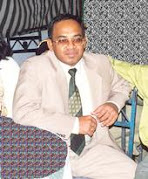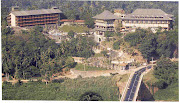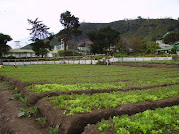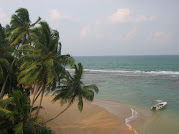
British Colonialists in Ceylon
Tour Sri Lanka, The Land of Delights with Riolta Sri Lanka Holidays, Sri Lanka. Total Holiday Experience awaits you in the beautiful tropical island of Sri Lanka.
Victoria Dam
At the commissioning of Victoria dam of Mahaweli River diversification Project on 12th April 1985, Minister Gamini Dissanayake in his speech carried an implication that UK grant-aided Victoria multi-purpose reservoir project, in a way, was a compensation for the damage done to the island during it’s extended colonial rule during 1815-1948: “If the plantation economy introduced a major social change Victoria signals another & a much vaster change. If the plantation economy enfeebled the peasantry, Victoria & the Mahaweli scheme gives them a new life”
Damage done by the colonialist British
Frantz Fannon stated colonialism distorts human nature, breeds contemptuous human relationships; it enthrones human cruelty, destroys & emasculates the urge for human freedom; it supplants the natural with the artificial, setting in motion a train of misery, death & destruction. The last wish of Keppetipola Disava of Kandy, the leader of Uva Rebellion in 1818 was “May I be reborn in Lanka to continue struggle for freedom of Sinhalese from British; the last words, defiant to the last breadth, of Weerahennadige Francisco Fernando alias Puran Appu of Moratuwa, the leader of Matale Rebellion in 1848 was “if there had been half a dozen such men as me to lead there would not be a white man living in the Kandyan Provinces”.
Ceylon became a lucrative British colony of the Great Empire, rather a great market. Profitable trade in cinnamon, coconut, rubber and coffee, and later tea, brought wealth to the coffers of the colonialists. During the early period of colonial administration was pre-occupied with military & political consolidation, & thereafter, with capitalist enterprise in the plantation. The indentured labour from Southern India was to shatter the social fabric of the island; documented favourtism to minority Tamils resulted in them secured in the box seat to the detriment of majority Sinhalese. But then again, in spite of the adverse effects, it was not without favourable changes; banking & commerce was developed, brokering & agency houses came into being, the railways were laid, legislation was brought regulating industry, trade & commerce. This country stepped into the age of mercantilism. Thus, were set in motion the path to new way of life, breaking off old feudal patterns.
Belated revival of irrigation projects by the colonialist British
It must be also said in fairness, that Sir Emerson Tennent (1843-1850) a Colonial Secretary, who authored the famous work CEYLON-An Account Of The Island (1859), focused attention on the importance of irrigation. Then the British Governor, Sir Henry Ward (1855-1869) took up an enlightened view: he stated that the British administration had “never devoted a fair proportion of the revenue towards the restoration of old works & the one thing that comes home to every Sinhalese is the improvement of those means of irrigation which the climate rendered indispensable.The irrigation Department was set up in 1900 with H.T.S. Ward as the first Director of Irrigation. The scholar-engineer, Henry Parker who wrote ANCIENT CEYLON (1909) was assigned to the new department & did much to kindle interest in the old irrigation system in the Rajarata. An irrigation expert, William Strange, arrived in 1909 to carry out as study. Renovation or re-construction of numerous major irrigation works including Giant’s tank, Giritale reservoir, Kumbukkan Oya scheme, Minneriya reservoir, Nuwarawewa reservoir Tissa wewa reservoir, Walwe Ganga river, Kirindi Oya Scheme, Kala Wewa & Gal Oya west scheme were carried out by the colonial administration during 1900 to 1948. The first major construction in the Mahaweli system in the modern era, was completed in 1937, with the restoration of the ancient Elahera-Minneriya Yoda Ela Cannal (54 miles) to take water from the Amban Ganga, to the restored Minneriya reservoir. The tradition of renovation & construction of irrigation projects thus initiated & carried out by the British has been continued by Free Ceylon since 1948 & culminated in accelerated Mahaweli River diversification project in 1980.
Knowledge of the Sinhalese of their Ancient Glory
During the colonial period, the Sinhalese were not unaware of their glorious chronicle Mahwamse, history, irrigation & heritage in the lost cities of Anuradhapura & Polonnaruwa. What they had no knowledge of were the precise locations of some of the monuments & ruins. The Mahawamsa records that King Duttha Gamani made a proclamation that Elara’s tomb should receive the same honours given to that of a chakkavatti or supreme monarch, & that all processions passing the spot should silence their instruments & even if he were the king himself, should go on foot & in silence. In1818 nearly one thousand eight hundred years later, Pilima Talawe, the Adigar or chief minister was fleeing from the British forces, & happening to pass through Anuradhapura, though hotly pursued, yet in spite of the danger & his own fatigue, he got down from his palanquin & as he did not know the precise location of the tomb of Elara, he walked on nearly a mile till he had passed far beyond.
Rediscovery of Ancient Glory of Sinhalese by the British
In view of the enormous volume of physical, historical, topographical & social accounts on Ceylon contributed by the British colonialists in Ceylon, to give the devil his due, this narration would be better left to an Englishman himself. Following is the Introduction to the work “Ceylon Past & Present” by Major C. M. Enriquez, F.R.G.S Year 1812







































































































0 Comments:
Post a Comment